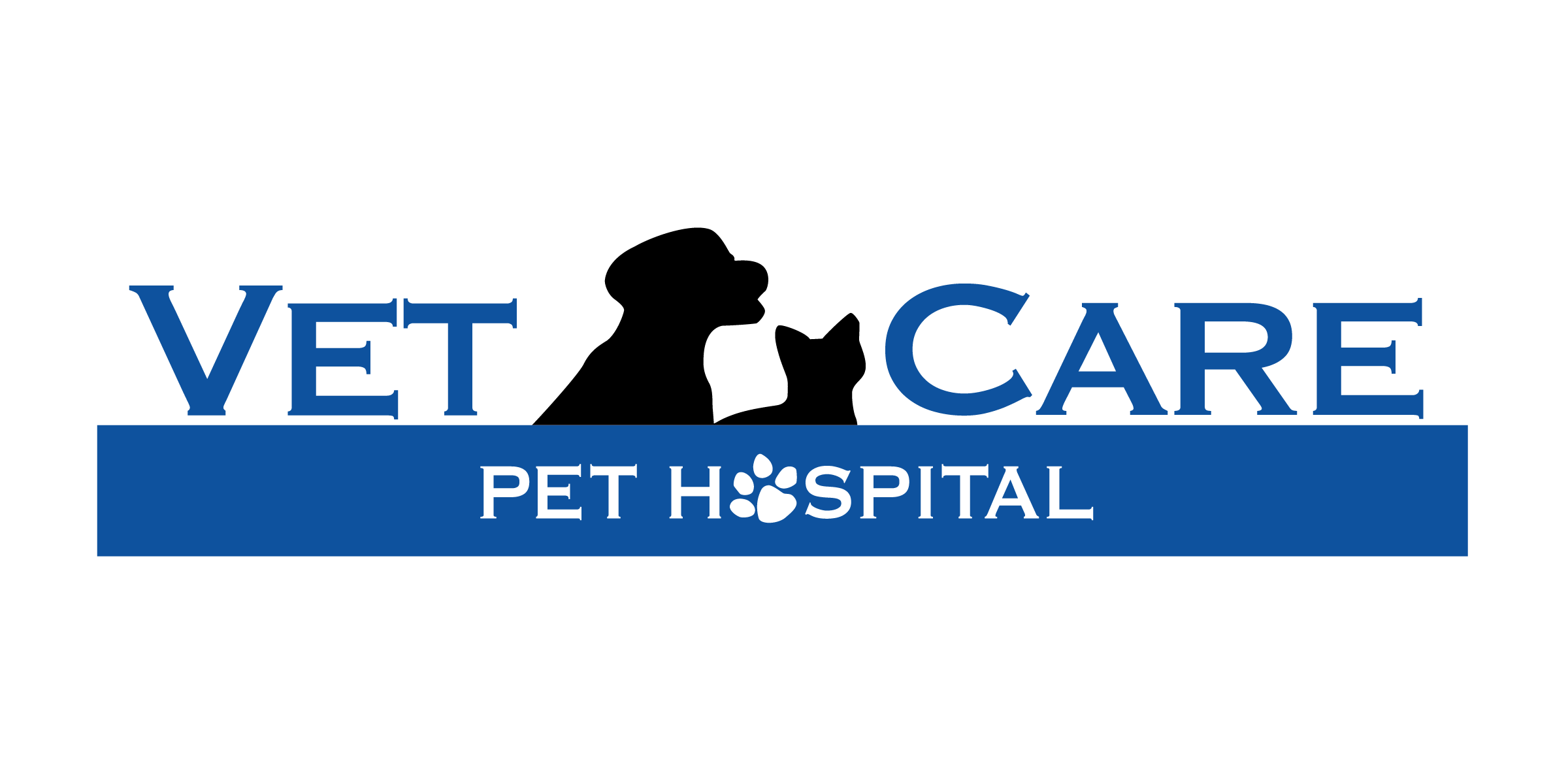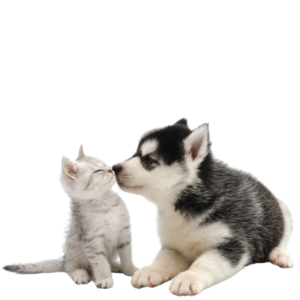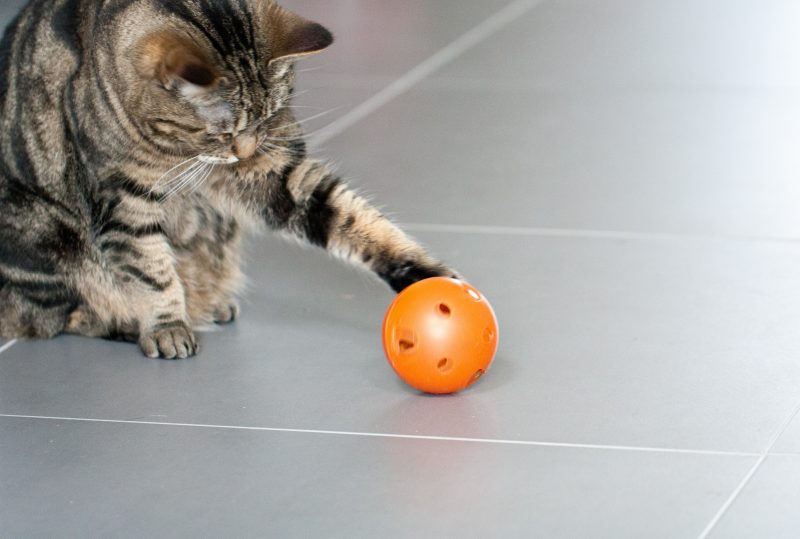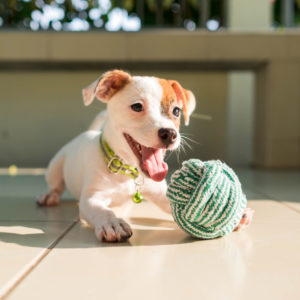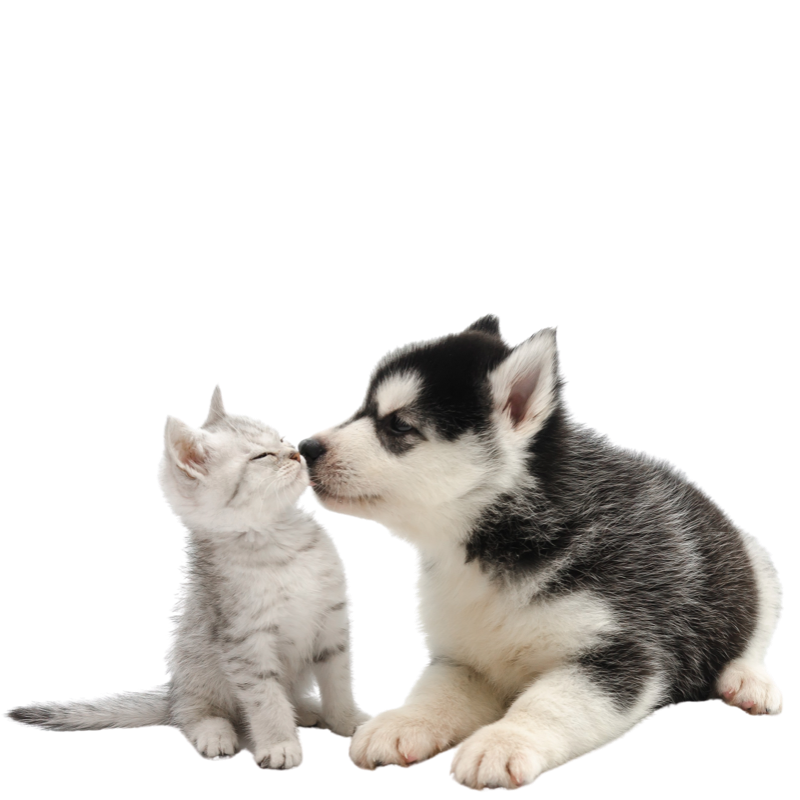This is the time of year when people make their goals and decide what they want to change or accomplish in the upcoming 365 days. The most common New Year’s resolution we hear about is to get in better shape, eat a healthier diet, spend more time at the gym, etc. Applying this resolution to your pets as well would be a great idea and would benefit both you and your furry four-legged family member!
Is my pet overweight?
It is estimated that 35-50% of pets are overweight. The most accurate way to tell if your pet is overweight is to have a veterinary exam. Vets use a 5 point scale to determine the body condition of your pet. For example, a 1/5 would be emaciated, and a 5/5 would be obese. 3/5 is the ideal body score. Using this scale, a 4 or 5 point body score would mean your pet should lose some weight.
An easier way to judge this for yourself is to try to feel your pet’s ribs and spine. If there is so much fat on top of them that you can’t feel the bones, then your pet is probably overweight.
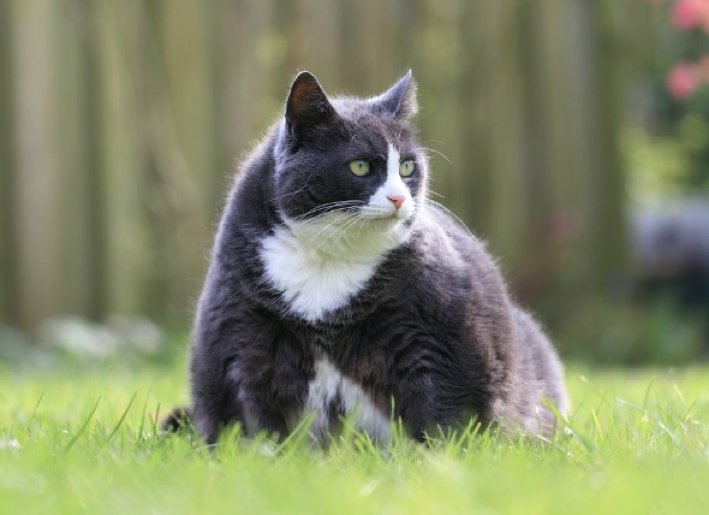
How did my pet get overweight?
The most obvious cause of obesity is a poor diet and exercise routine. Just like with people, your pet will gain weight if it is eating more calories than it is burning for energy. If your pet has a poor diet that is high in calories and they don’t do very much physical activity, they will likely become overweight or obese. However, you may be feeding a great high-quality diet and exercising your pet an appropriate amount, yet still, be seeing weight issues. Other factors associated with obesity include:
- Genetics – Some dog breeds are prone to obesity, including (but not limited to) labrador retrievers, golden retrievers, beagles, cocker spaniels, dachshunds, bulldogs, newfoundlands, pugs, rottweilers, shetland sheepdogs, basset hounds and cairn terriers.
- Metabolism – Everybody has a different metabolism. This is also true for our pets. Some pets have a slow metabolism and don’t burn calories as efficiently, causing extra weight. This could be related to genetics or a disease like hypothyroidism. A slow metabolism could mean that a healthier diet and increased exercise may not make that big of a difference for your pet. If you have made these changes for your pet and they still aren’t losing weight, consider bringing them to the vet to test for one of these conditions.
- Treats – The majority of pet owners show affection by giving their pets treats, not putting into consideration that most treats are high in calories and fat and don’t factor the treats in when thinking about their pet’s diet. For many dog and cats, treats are the biggest cause of their weight issues.
- Improper measuring – Some owners do not measure their pets food at all, but just fill the dish when they see it is empty. This is not a good idea and will almost always lead to an overweight dog or cat. Other owners attempt to measure the food but do it improperly. A cup of food relates to an actual measuring cup and not a mug, drinking cup or randomly sized scoop. Vet clinics often have free food measuring cups if you don’t have one.
- Package guidelines – Most food labels include a feeding guideline that goes by the animal’s weight. However, each pet is different, and one dog at 50 lbs may be obese while another at 50 lbs could be at their ideal weight. The best way to find out how much you should be feeding your pet is to ask your vet. They can always give you a more appropriate guideline and work with you and your pet to adjust it from there.
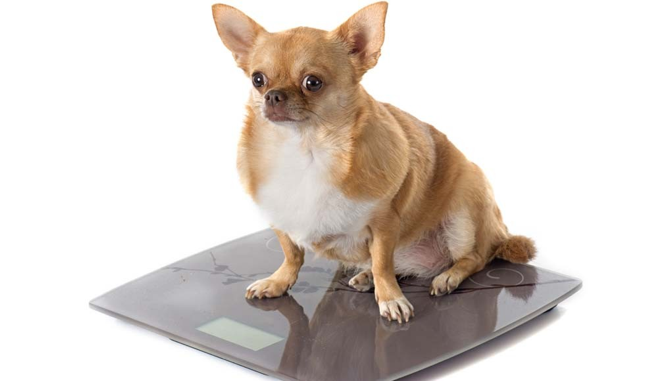
Why is a little extra weight bad for my pet?
Being overweight or obese almost always leads to more serious health problems and a shorter lifespan. Examples of medical issues associated with obesity include:
- Diabetes – Just like in humans, extra body fat causes insulin resistance in cats. Losing weight can play a huge role in helping to manage a cat’s diabetes. It can also greatly decrease a non-diabetic cat’s risk of developing diabetes.
- Arthritis – Carrying that extra weight puts added stress on your pet’s joints which can be quite painful. This could affect not only the hips, knees, etc. but also the discs of the spine. Painful joints often lead to poorer mobility, which will in turn cause more weight gain.
- Respiratory problems – Extra fat around the chest can make it harder to move the respiratory muscles, meaning it is more difficult for your pet to take deep breaths. It can also cause your pet to overheat more easily and if their lungs can’t fully inflate they may start coughing.
- Hepatic lipidosis – AKA fatty liver. This is especially a risk for cats. If an overweight cat stops eating due to illness, stress, etc., their body will start metabolizing fat for energy. Because the liver isn’t made to process a large amount of body fat, it becomes filled with fat it cannot use. This can lead to liver failure and potentially death.
- Increased surgical/anesthetic risk – Surgery and anesthesia are much more difficult with overweight pets. Anesthesia further suppresses their respiratory function. Drug dosing is less accurate because it is hard to estimate lean body mass when the animal has a thick layer of fat covering its’ body. Additionally, any abdominal surgery becomes more challenging because the extra fat makes everything slippery and can make it harder to visualize everything through the abdominal fat deposits.
- Shorter life span – A study showed that dogs with a normal weight lived an average of 2.5 years longer than overweight dogs.
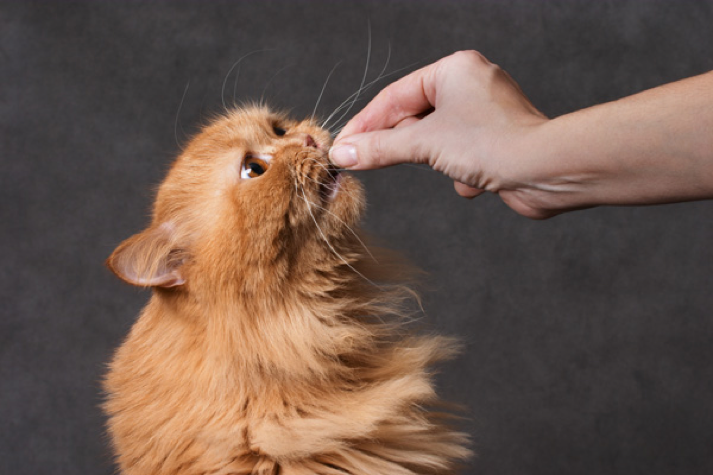
How can I help my pet lose weight?
- DIET:
- Feed a prescription diet made specifically for weight loss.
- Measure the food you give your pet with an accurate 8 ounce measuring cup.
- Feed in 2-4 smaller meals a day instead of always leaving food down. This will prevent random snacking throughout the day and also makes it easier to feed multiple pets different diets.
- Reduce the amount of treats you are giving and look for a healthier, lower calorie treat, such as freeze-dried liver, salmon, shrimp, etc., treats already associated with a weight loss diet, plain vegetables, or a little piece of cooked chicken or fish, instead of a calorie-packed grocery store brand.
- Hold firm to your goal even if your pet is whining and begging for more food or treats. If you give a treat every time they beg for one, you are reinforcing an unhealthy and undesirable behaviour.
- If you are changing your pet’s diet, be sure to do a gradual transition over the course of a week or so. For example, you can start by giving ¼ of the new diet and ¾ of the old diet, then gradually switch to ½ and ½ and keep increasing the new diet until that is the only food being fed. Switching the food right away can cause an upset stomach and diarrhea.
- As previously mentioned, it is best not to go by the “Recommended Feeding Guidelines” on the bag of food but rather to sit down and discuss with a vet how much your pet should be eating every day.
- Cats require meat in their diet, no exceptions. Do not feed a cat a vegetarian diet. This is extremely harmful to their health.
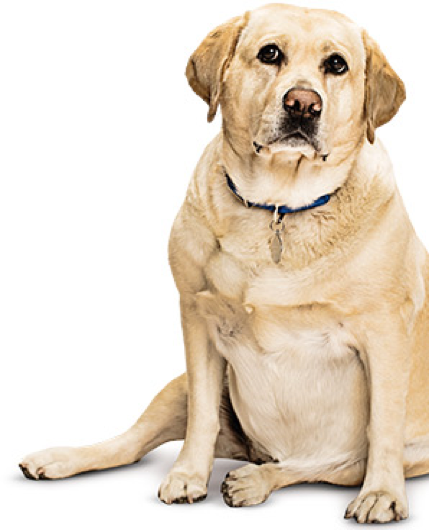
- EXERCISE:
- Try to provide 15-30 mins of physical activity every day for your pet.
- Take your dog out for a walk or a run.
- Play fetch or go to the dog park.
- Go swimming with your dog. This is a great alternative for obese dogs or dogs with joint problems.
- If you live in a hot area, it is recommended to exercise your pet in the morning of later in the evening. The middle of the afternoon is when it is hottest, and your pet could be at risk for serious heat stroke if overheated.
- Look for interactive toys that can be played with without your participation.
- Cats love toys that mimic escaping prey.
- OTHER TIPS
- It is always recommended to have a vet examine your pet and work with you to create an appropriate weight loss plan for them, their health and their lifestyle. They can also give you a more accurate idea of what their goal weight should be.
- Consider discussing with your vet different tests that should be done to assess your pet’s health prior to starting your weight loss journey. As previously mentioned, there may be health issues contributing to your pet’s obesity, such as diabetes, hypothyroidism, etc.
- Weigh your pets regularly, preferably weekly or biweekly. It is important to consistently weigh on the same scale since every scale is different.
- Your pet should only lose approx. 1% of their body weight a week. For example, a 15-pound cat should only lose around half of a pound in a month. A 50-pound dog should lose around 2 pounds in a month.
- Once your pet reaches their ideal weight, you will need to adjust the amount of food you are feeding to that they can maintain this weight.
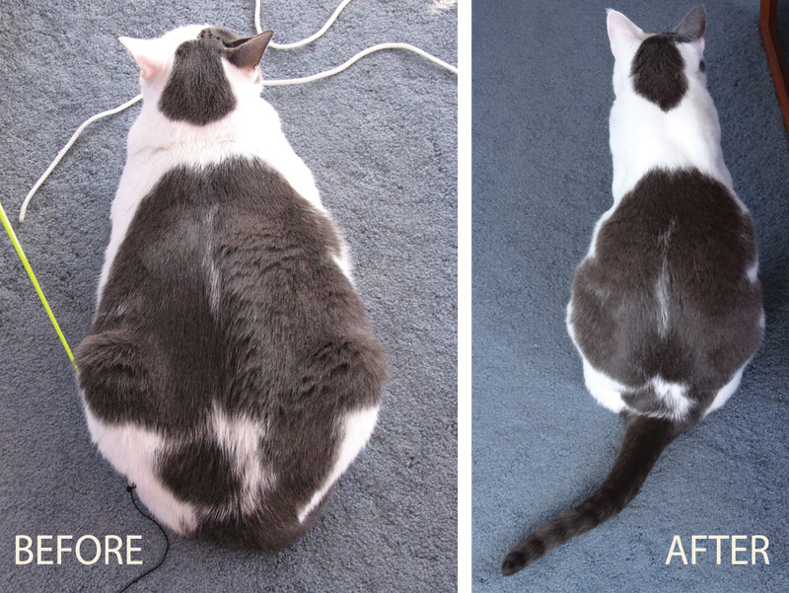
Written by Stephanie, RVT
